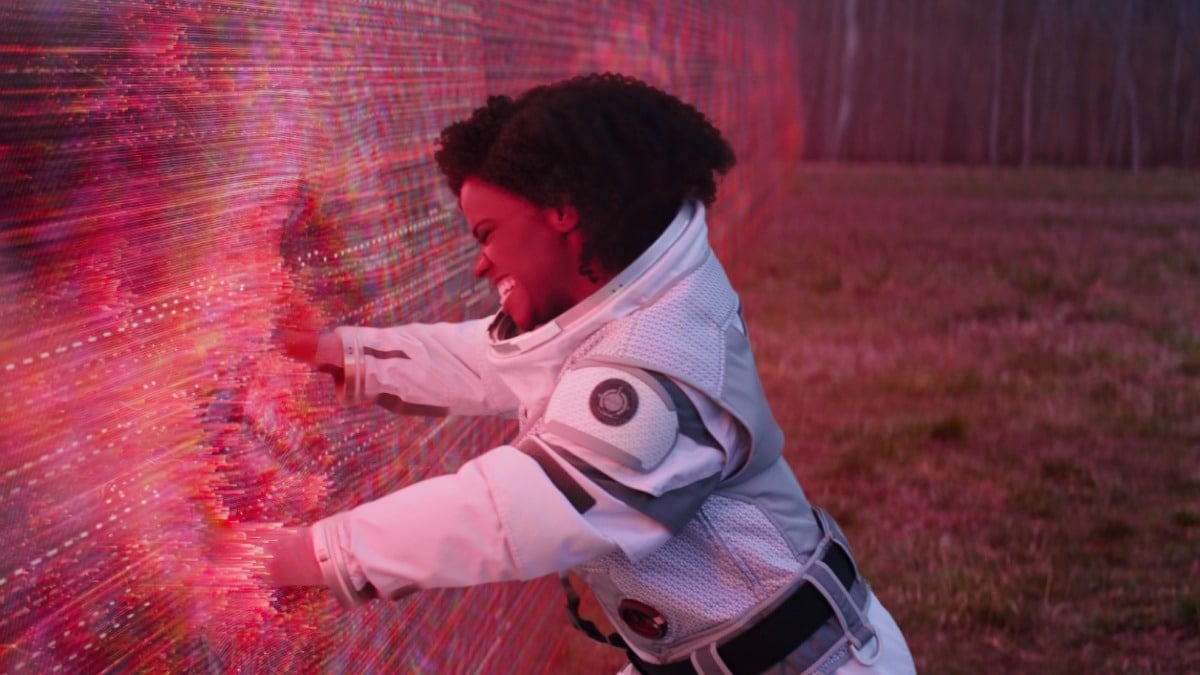
On WandaVision, nothing was taken for granted, including the special effects.
Marion Spates, who handed Digital Domain’s FX for the MCU series, shared some insight into the show and how, like so much else, the FX were mean to homage classic TV sitcoms.
The Hex field
For the first three episodes of WandaVision, Wanda and the Vision are shown in what appears to be a weird world of classic TV sitcoms, including moving from black-and-white to color.
At the end of episode three, after Wanda has ejected Monica Rambeau, it’s revealed the town of Westview is surrounded by a bizarre energy field.
Episode 8 delves more into how a heartbroken Wanda came to Westview and used her powers to transform it into this new world.
Speaking to Art of VFX, Spates discussed Digital Domain’s involvement, including how Marvel insisted this show look as impressive as anything on the big screen.
“Marvel approached this episodic show very much like one of their films,” Spates said. “Very ambitious with loads of MCU action-packed story telling, but in this instance, it was all viewed from the comfort of our homes. The show needed to exceed a certain level of quality, and I think we achieved this goal.”
Spates added that, just like the show’s plotlines, the Hex itself was meant to be a homage to classic television.
The overall look of the hex wall came from WandaVision’s VFX Supervisor, Tara DeMarco, and it is actually an homage to old school tube-based television sets. The wall is meant to reflect the look of a cathode-ray tube television, complete with glitchy lines caused by interference, and a different color scheme used to reflect Wanda’s emotional state.
The creation of the hex wall was driven by the story, and there are several details in it that are a direct reflection of the show’s TV and sitcom-inspired nature. The wall is also influenced by Wanda’s emotional state, so in episode 104, when you first see the wall from the outside, it is a calm blue, but in the final moments when Wanda is angry, it is a dark red.
Dropping the field

The show’s finale has Wanda finally realizing how damaging her actions have been and dropping the field to restore Westview to the rather run-down town it had been when she arrived.
Spates explained that the FX crew was told to make it appear as if the “TV signal” of this world was going out as Wanda undoes her spell.
During the opening of the hex wall, Wanda is forced to rip open the wall to let the citizens of Westview out. The studio was adamant that the tearing of the wall feature the glitch effect, and the wall itself was heavily influenced by the look of old CRT televisions that frequently have scan lines. The effect was meant to be reminiscent of a TV under stress, which played into the story.
Another touch was that Wanda’s powers meant a new color scheme.
“Wanda’s previous powers were known (informally) as “wiggly-woo” magic and were made up of a bright red swirling energy…Her new chaos magic is much darker and more menacing and has more dimension and depth to it.”
The two Visions

Spates also discussed the creation of the “White Vision” and its logistics, heading into battle with the “Westview Vision,” which involved Paul Bettany having to handle both roles against himself and making the complex issues of the capes work.
The fight between Red and White Vision was especially interesting as both Visions have the ability to shift their densities. As they fly over Westview, each Vision tries to use that ability against the other. One Vision tries to lighten their density to impale the other, while the recipient tries to increase their density to trap the attacker in place. To make that look as real as possible, our new “muscle transfer tool” allowed our artists to automatically move muscle models between characters. We then matched the augmented shape of the outer skin, and added a layer of high-tech synthetic-looking skin to reference Vision’s vibranium shell.
She states the scene of the pair facing off in a library was her favorite of the series, and “when Paul was on set and dressed as the White Vision, he was a different person. It was amazing what he did.”
As Spates’s words illustrate, the care and detail of WandaVision’s unique world went all the way to the FX presentation.
WandaVision season 1 now streaming on Disney+.